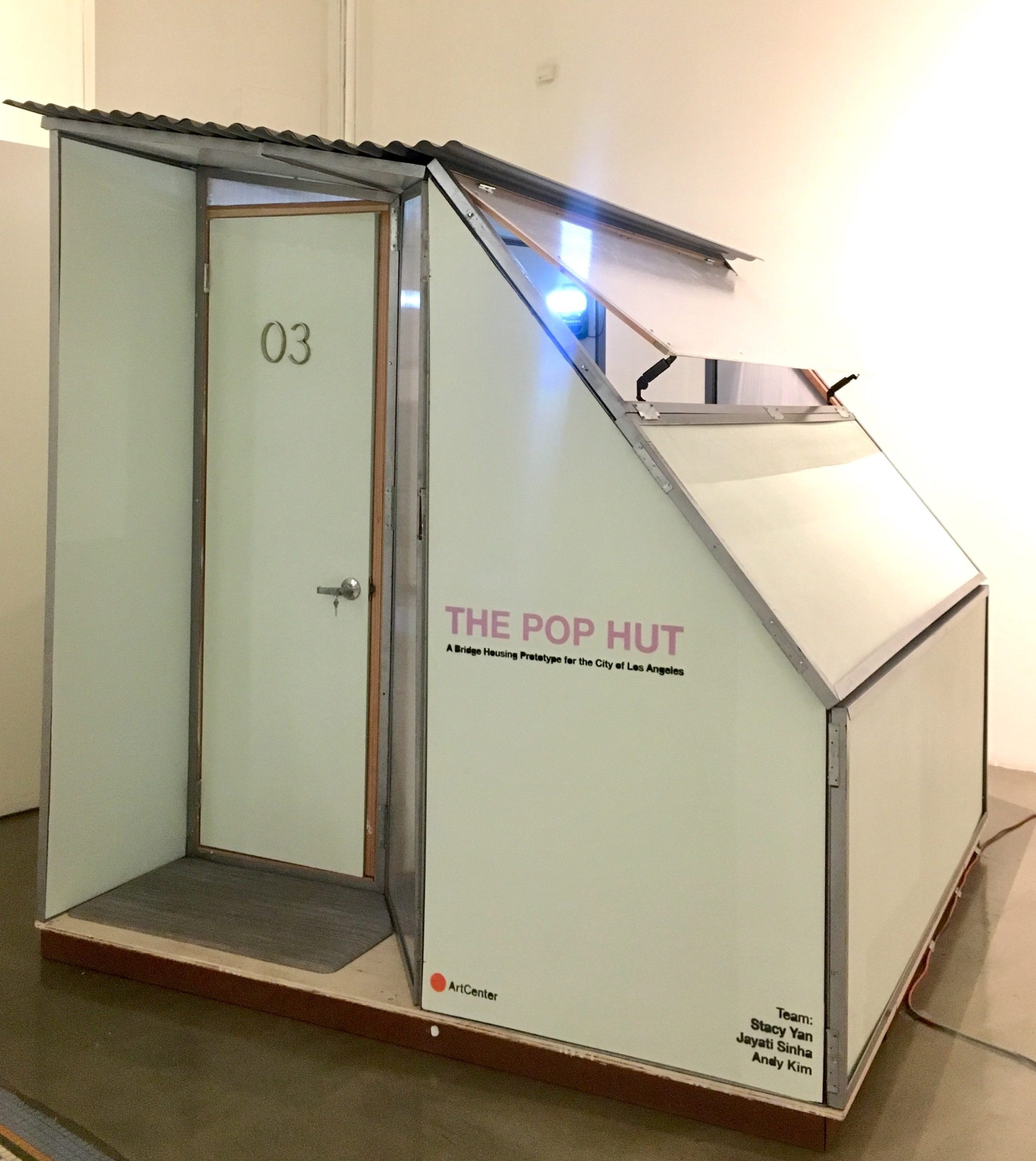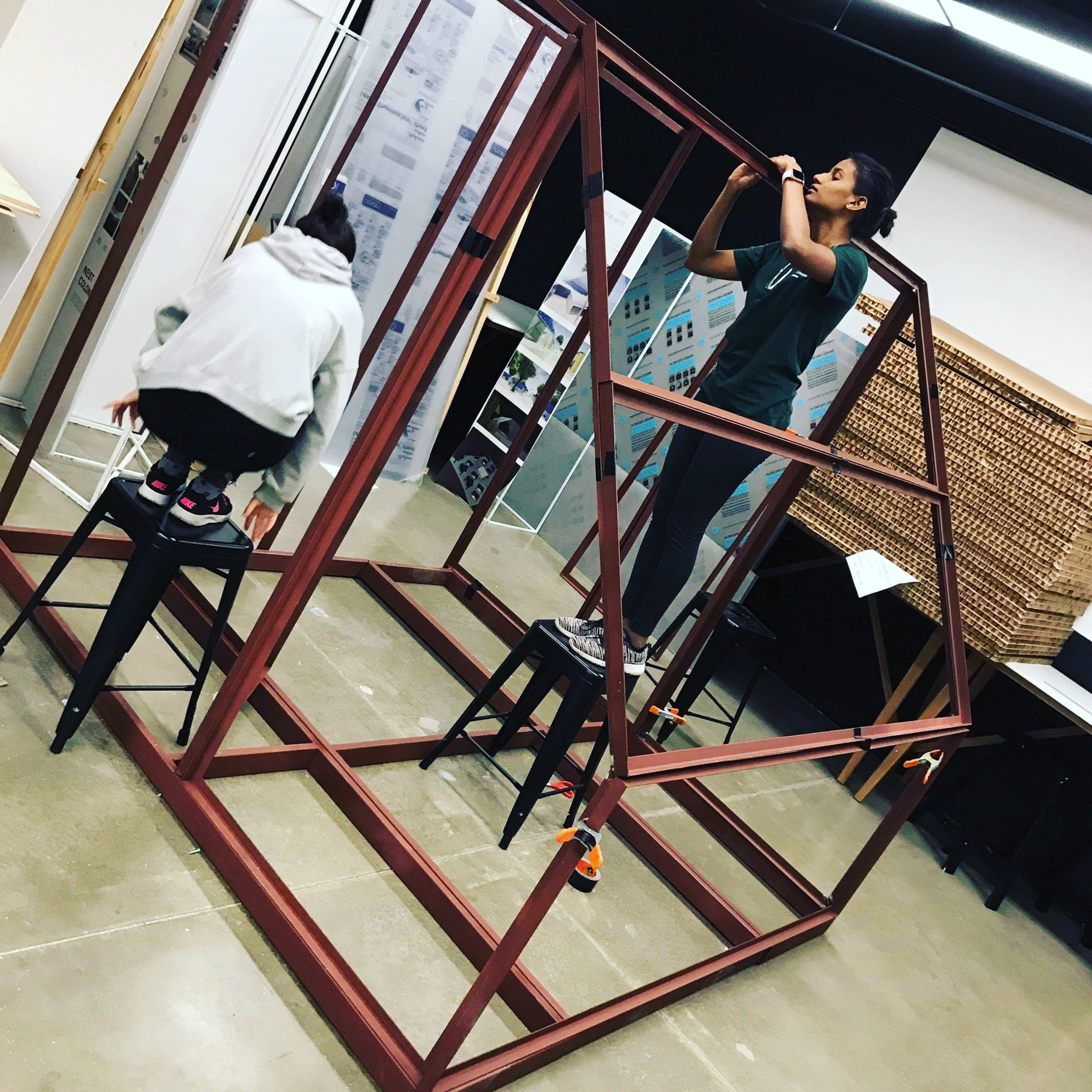“I was surprised to find so many homeless people in a developed country like America. I realised it’s not just a problem in developing or underdeveloped countries, it’s a global issue,” Jayati tells Global Indian over a call from California. Her invention might be a stepping stone to solving the homelessness crisis in California, and Jayati believes that the prototype can be replicated anywhere in the world, including India.

Jayati Sinha
The evolution of a childhood dream
When she was quite young, a fortune-teller prophesied that she would do something with scissors when she grows up. The only interpretation that her ecstatic mother could derive at that moment was that her daughter would become a doctor. She did pick up a pair of scissors as a youngster but that was to make Barbie dresses. “I must have been in second grade and was very much inspired by the protagonist of Disney show That’s So Raven. I was fascinated by how she designed something from scratch,” smiles Jayati whose interest later developed into product design. Her father, who is a scientist and professor at IIT-Kanpur, would get new gadgets and toys from his foreign trips which piqued her interest in technology. “My brother and I would take them apart and see what was inside of them. This desire to blend design and technology led the way to my interest in product design, which is ever-expanding,” adds the responsible designer.
The National Institute of Fashion Technology, Bhopal gave wings to her dreams wherein the Kanpur-born enrolled for a Bachelor of Design in lifestyle products. The four years played a perfect catalyst in helping shape her ideology as a product designer. Her perception changed when she was in college and happened to visit a crafts cluster at a nearby village, where artisans practiced metal crafts. “It was an opportunity for us to learn from them and vice versa. The visit had an impact on me as I saw how they were keeping the culture alive with their crafts. But at the same time, they weren’t getting paid enough,” explains Jayati who couldn’t get past the paradox. “They were busy making beautiful things but their own life was nothing like it.” This pushed the 26-year-old designer to become more empathetic and do things in the future that create an impact.
The project that changed it all
This quest for purpose took her to the ArtCenter College of Design in California in 2017 for her Masters in Environmental Design. Two years into her degree, Eric Garcetti, the Mayor of Los Angeles, reached out to her college “looking for inspiration” to build budget houses for the homeless. The mandate was to build structures that were foldable, transportable, and something that gave them a “feeling of home”. Soon she began ideating on Pop Hut along with her team that was led by Professor James Meraz. “It’s temporary housing, like a transition house that homeless people can use when they have no place to go before they move to a permanent house once they get a job or something.” While building on the concept, Jayati and her team were crystal clear about including “empathy” and a “feeling of home” to the Pop Hut. They did that by including a door, a house number, and a small porch. “It’s not just a box but should give them a sense of home and belonging,” adds Jayati who worked on Pop Hut for about a year. “The initial few months went into interviewing the homeless and understanding their psyche, gathering information and research and prototyping. We built the home in four months,” reveals Jayati who was emotional about designing the house, adding, “We used translucent glass instead of transparent so residents feel less vulnerable. Having been on the streets for so long, they don’t want people to look into their homes anymore. It gives them a sense of privacy.”

Pop Hut designed by Jayati and her team
Made on a budget of $2000, the Pop Hut’s journey from concept to reality had its share of challenges. If getting people to open up about their insecurities was a task, finding affordable material for the built was nothing short of a dare. “Making a connection where they feel safe enough to show their vulnerable side requires time. But this also made me understand how privileged I am to come from a family that supports me – emotionally as well as if need be, financially,” says Jayati who gives a reality check on the stark difference in lifestyles between India and US. “Here, kids leave home at 16 or 18 years to support themselves. Many pay their fees with the money they earn at Starbucks or McDonald’s. They don’t get to explore the opportunities to grow or do something they are capable of. However, in India, teenagers get to focus on education without having to worry about how to fend for themselves,” says the designer who in the process understood that everyone has a story and “they aren’t homeless because they are lazy.”
How an environmental designer became responsible
With the prototype getting a nod from the mayor and on its way to becoming a reality, Jayati believes that Pop Hut can be replicated in India too, but not without a few tweaks. “We’ll have to learn about the environment – where it will be placed and understand a little about the problem of homelessness in India to make it a product that caters to the need of the people. We might have to change a few materials too, but overall this can be replicated anywhere,” says the designer keeping in mind the population of 1.77 billion homeless people in India.

Jayati Sinha working on Pop Hut
Jayati, who is currently working with Accenture in California, is steadily unfolding the concept of “responsible design.” While environmental designers focus on projects that are eco-friendly and sustainable, responsible designers collectively focus on “environmental, social and economic factors.” “It’s embedded in the decision-making of why we are doing what we are doing. We don’t mind saying no to big clients if what they are asking for isn’t good for the users. That’s where the collective consciousness is now moving to,” reveals Jayati who loves to work with clients who think about “humans as humans and not as profit.” Currently busy exploring the EV space in her new project at work, she is understanding “how and why EVs are important and even if they are good for the environment, and how we can make it better,” says the girl who loves unwinding by spending time with her German Shepherd, growing plants at her home, and working out.

Jayati loves hiking
She believes that winds of change are causing shifts like never before. “A lot of people now are not simply doing jobs for the sake of it, but most are busy creating an impact. Things are shifting on a larger scale,” signs off Jayati.





